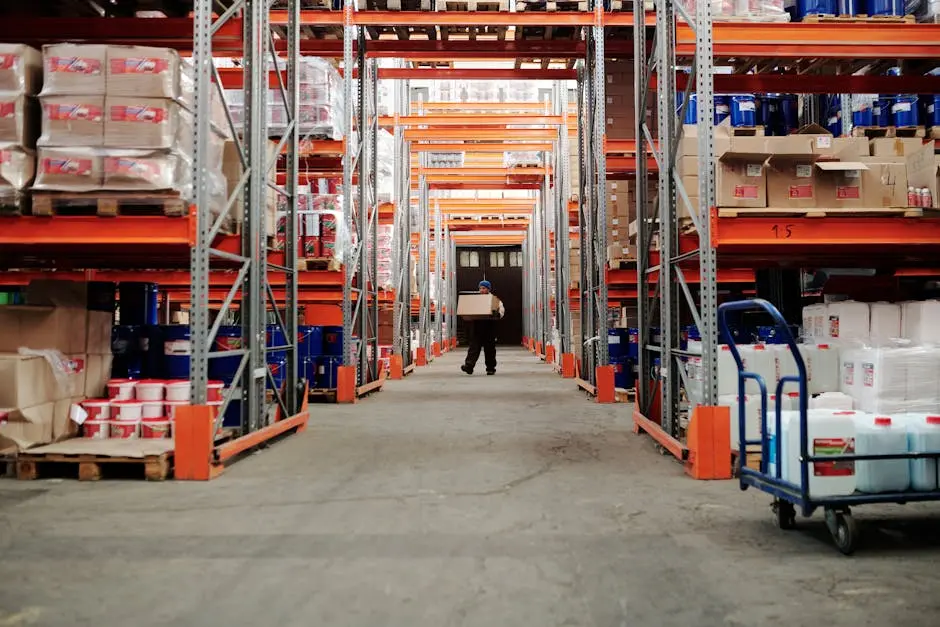In the ever-evolving world of e-commerce, understanding the logistics of Amazon’s inbound processes is crucial for sellers looking to optimize their fulfillment efficiency. This blog post will break down what Amazon inbound entails, how it impacts your business, and the best practices to enhance your operations transforming your approach to inventory management.
What is Amazon Inbound?
Amazon inbound refers to the process by which sellers send their products to Amazon fulfillment centers. Understanding this process is essential for any seller looking to leverage Amazon’s marketplace effectively. This entails more than just shipping products; it involves ensuring that items are properly prepared, labeled, and packed to meet Amazon’s strict requirements.
Every step from the moment your items leave your facility to when they are received at an Amazon warehouse is part of the inbound journey. This connection is vital as it sets the tone for inventory management and ultimately affects customer satisfaction. As you delve into the nuances of Amazon inbound, you will discover that efficiency in this process can significantly reduce delays in order fulfillment.
Consider that Amazon has specific guidelines for packaging, labeling, and shipping. These standards are designed not only to streamline the intake of products but also to ensure safety and efficiency during the fulfillment process. Ensuring compliance helps prevent costly delays and misunderstandings that could disrupt your sales timeline. This compliance is what distinguishes successful sellers from those who struggle.
The Importance of Inbound Logistics in E-commerce
Everything begins with inbound logistics. In the context of e-commerce, effective inbound logistics is crucial for maintaining a robust supply chain. Reliable inbound processes help sellers optimize their stock levels, reduce overhead costs, and ensure timely delivery to customers. Without such efficiency, you risk losing out on potential sales and, more importantly, customer trust.
Many businesses overlook the significance of inbound logistics, focusing instead on outbound processes like marketing and sales. However, understanding how items move into your inventory is just as critical. A seamless inbound operation helps to maintain product levels, manage inventory effectively, and prevent stockouts that could frustrate customers eager to receive their orders.
Furthermore, effective inbound logistics can lead to improved forecasting and demand planning. When you understand your inbound process thoroughly, you can better predict how much product you need during peak seasons and adjust accordingly. This level of preparedness is what keeps your business one step ahead of the competition.
Key Steps in the Amazon Inbound Process
Navigating the Amazon inbound process effectively requires a clear understanding of its key steps. From the initial inventory planning to the final receipt of goods at the fulfillment center, each phase plays a crucial role. One of the initial steps involves creating a shipment plan in Seller Central, where you must specify what products are being sent and how many.
Once your shipment plan is in place, the next step is to prepare your products according to Amazon’s guidelines. This involves labeling items correctly and packaging them in a way that protects them during transit. Adhering to these guidelines is essential, as failure to comply can result in delays and additional fees.
After shipment preparation comes the actual shipping. Choosing the right carriers and delivery method is vital for timely arrival. Once your products reach the fulfillment centers, they undergo a check-in process. Amazon’s sophisticated systems will scan each item, ensuring it matches the shipment plan. This verification ensures that your inventory is accurately updated and ready for fast processing of customer orders.
Common Challenges in Amazon Inbound and Solutions
Even with a solid understanding of the Amazon inbound process, challenges can arise. One common issue sellers face is mislabeling their products, which can lead to delays and increased costs. Fortunately, this can be mitigated by implementing more rigorous checks during the preparation phase. Double-checking labels and ensuring compliance with Amazon’s guidelines can save you from potential headaches.
Another frequent challenge is managing shipping delays which can arise from external factors like weather or logistical hiccups. To combat this, maintaining open communication with your carriers and having contingency plans in place will help minimize the impact of such disruptions. Opting for faster shipping methods when possible can also ensure that your products arrive on time.
Finally, inventory discrepancies can occur, leading to confusion about stock levels. Using inventory management software that integrates with Amazon can help you track your products in real-time. This technology will provide insights and alerts about stock levels, helping you address potential issues before they escalate.
Best Practices for Managing Amazon Inbound
To manage Amazon inbound process effectively, adopting best practices is essential. First and foremost, always stay updated with Amazon’s policies. The marketplace continuously evolves, and staying informed about the latest guidelines ensures compliance. Engaging in regular training or reading Amazon’s updates can greatly enhance your preparation.
Next, streamline your packing and labeling processes to improve efficiency. Establish standard operating procedures for your team to follow when preparing shipments. This step minimizes errors and speeds up the onboarding process for new employees, resulting in smoother operations overall.
Additionally, using technology and automation tools can significantly enhance your inbound management. Software designed for inventory management will help you track shipments in real-time, allowing you to monitor product levels closely. Such tools provide valuable insight, making it easier to predict the future inventory needs based on historical sales data.
Leveraging Technology to Optimize Inbound Processes
Technology is a pivotal factor in optimizing the Amazon inbound process. By leveraging software tools, sellers can gain a clear advantage in managing their inventory. Automation can take over mundane tasks such as generating shipping labels or tracking shipments, freeing up time for sellers to focus on strategic decision-making.
Moreover, advanced analytics can provide insights into your inbound logistics performance. By analyzing data, you can identify trends and patterns, letting you make informed decisions about reorder points and shipment schedules. This proactive approach creates a buffer against stockouts and helps maintain a healthy inventory flow.
Integrating your systems with Amazon APIs can also streamline communications and ensure consistency across platforms. Such connectivity improves accuracy and helps avoid inventory discrepancies. In the fast-paced realm of e-commerce, technology isn’t just a tool; it’s a vital component of success.
Measuring Your Inbound Efficiency
Measuring the efficiency of your inbound process is key to identifying areas for improvement. One effective metric to track is your receiving time—the duration it takes for a shipment to be checked in at an Amazon fulfillment center. Monitoring this metric can highlight bottlenecks and inform better planning for future shipments.
Another important measure is inventory accuracy, which reflects how well your stock levels match what’s on the shelves. Regular audits can help identify discrepancies and contribute to smoother day-to-day operations. Knowing where your inventory stands lets you respond quickly to customer demands.
Additionally, solicit feedback from your logistics partners and team members involved in inbound shipments. Their insights can be invaluable as they are often on the frontlines witnessing areas that may need attention. Fostering an open communication line ensures everyone contributes to a more efficient inbound process.
Optimizing Your Fulfillment Strategy
By grasping the ins and outs of Amazon’s inbound processes, you are not only streamlining your operations but also setting the stage for greater sales and customer satisfaction. Embracing these strategies will empower you to manage your inventory effectively and achieve higher fulfillment efficiency.


